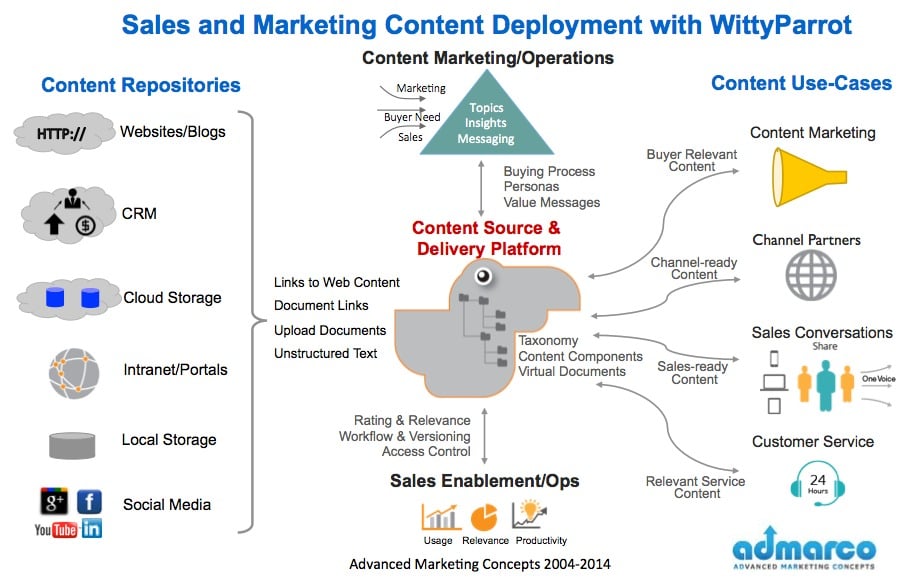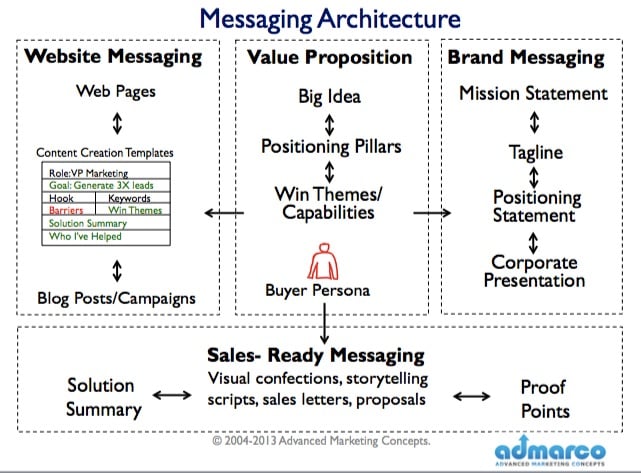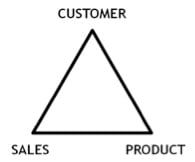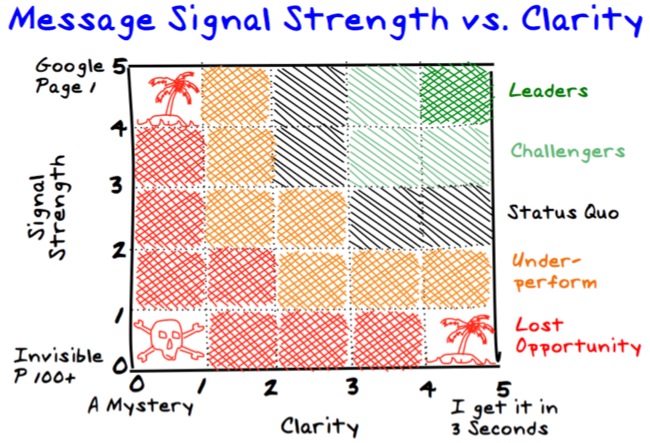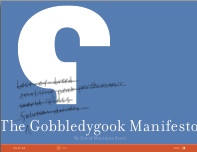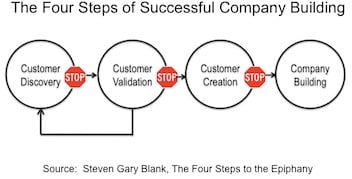I'm delighted to introduce
Jock Busuttil, my guest blogger this week on a subject that is near and dear to my heart; - connecting sales and product management with the customer. Jock Busuttil is a Senior Product Manager and an alumnus of Advanced Marketing Concepts.
Quarter-inch drills or quarter-inch holes?
Despite relying on each other for the success of their products, the Sales and Product teams often have a jarring relationship. This is far from ideal. By looking at where things go wrong we can identify a better way of working with each other. The prizes on offer: shorter sales cycles, more easily achieved targets and customers who are always happy to hear from you.
Where do things go wrong?
“What we’ve got here is a failure to communicate” (
Cool Hand Luke, 1967)
The strongest business relationships are built on three pillars:
- A shared appreciation of the differing needs and priorities of each
- A genuine desire to help the other to achieve the best outcome for all
- Trust in the other’s integrity
Dysfunctional relationships tend to be caused by a failure in one or more of these areas. There are actually three relationships in the mix. This is how Jock sees it, he's a product marketing professional.
While we’re looking at how Sales and
Product Marketing work with each other, it’s worth remembering also that each has a relationship with the customer (or prospective customer). This customer focus provides a way to align the Sales and Product teams around
value creation.
The illustration below is my perception of the relationship from the
customer's perspective and highlights the disconnect between product
management and the customer.
Positive disruption
“People don’t want to buy a quarter-inch drill. They want a quarter-inch hole.” (Theodore Levitt).
It should be so simple: customers need something, Product builds it, Sales sell it to the customer, everyone’s happy.
Why is this so difficult in practice? A common mistake made by both Sales and Product is that the customer
wants the widget, gadget or solution that they’re selling. Wrong! What the customer really needs is an
outcome, for their problem to vanish as simply and easily as possible. Your widget, gadget or solution is just one way to cause that problem to vanish. Sometimes what the customer
needs is very different from what they
want.
A good Product team should be concerned with uncovering the outcomes that customers need, establishing the value of that outcome (i.e. how painful the problem is to the customer), then creating a solution that achieves that outcome in the most effective (and profitable) way.
The most successful products have always been those solving problems that customers didn’t realise they had. These are the products that
positively disrupt the market. As Henry Ford famously put it:
One of the best ways that Sales can help Product build the thing that customers really need is to have a healthy sense of curiosity. When you meet with a customer, they will probably tell you what they want, perhaps without realising what they need. This is understandable: the customer may not know that they have a problem in the first place, let alone know how to solve it. This is where you come in. Keep asking “why”; eventually you’ll get to the customer’s underlying pain points and understand how painful they are.
At this point you should conclude one of three things:
- This is something we can help the customer with right now. Great! Show the customer how to reach their desired outcome there and then. Laser-sharp focus is needed here – digressing into irrelevant features and benefits at this point will dilute your message.
- This is something we could potentially help with in the future. Bring the information you’ve gathered back to the Product team, but don’t commit to the customer at this stage. You’re not yet sure whether a solution is possible or when it could be delivered, and broken promises are a sure-fire way to kill a healthy customer relationship.
- This is not something we can (or want to) help with. If you go to a car dealership and ask for a speedboat, the Sales rep will politely show you the door and possibly direct you to an optician. If it’s clear that you can’t help the customer with a problem, move on to one you can help with. Do provide feedback to the Product team regardless. You never know, it may be time to diversify!
It’s worth bearing in mind that you can only come to one of these three conclusions if you really understand what problems your company and products solve and how to show the customer how they do so. Equally important is to know what problems they
don’t solve. If you’ve ever attended a customer meeting with an effective Product person, you should notice that they spend most of the time listening to the customer’s problems, then quickly home in on the one or two specific and relevant ways to solve the problem, which then resonate with the customer.
A market of one, some or many customers?
This leads us to one of the main differences in priority and driver between the Sales and Product teams. We’ve explored how the Product team benefits from you being curious and asking the customer “why” to uncover those painful and profitable problems to solve. But they’re working not just with you solely, but with the Sales team as a whole, as well as having their own direct dialogue with customers.
With all these sources of information, the Product team ends up with many problems to solve, all competing for a constrained set of resources (time, people, budget). Their goal is to achieve the best outcome for the company by focusing on the best outcome for the target market. To do this, they need to prioritise the entire set of problems they
could solve into a smaller set that they
will solve.
This filtering process is necessary and means implicitly that not all customer problems will end up being solved. Remember: the dealership sells cars, not speedboats! Don’t take it personally if they occasionally say “no” to you – they’re balancing the needs of the whole market against the needs of an individual customer and taking into account the long-term and short-term gains of what they will deliver.
Alignment delivers results
The good news is that when Sales and Product Management/Marketing are closely-aligned and both focused on the needs of the customer, you’ll see the following results:
- You’ll be having more and better quality conversations with prospective customers who have problems you can solve there and then.
- You’ll be empowered to quickly home in and demonstrate how you can solve their problem and let the product sell itself.
- Once you’ve established a track record of success, you’ll be working in partnership with the customer to solve their problems so they’ll start to bring them to you, rather than you having to uncover them over time.
Treat the Product team as allies. You’re both working towards the same goal, but in different ways. Appreciate and respect those differences and you’ll enjoy working and winning business together.
About the author
Jock Busuttil is a Senior Product Manager and an alumnus of Advanced Marketing Concepts. He has worked in B2B enterprise software for over twelve years for companies such as Zeus Technology (now part of Riverbed), Iron Mountain and Experian.
Jock is the author of
imanageproducts.co.uk, a blog for product managers and marketers, and provides training and mentoring for product people. He holds a degree in Classics from the University of Cambridge, UK. You can find him on
Twitter and on
LinkedIn.



